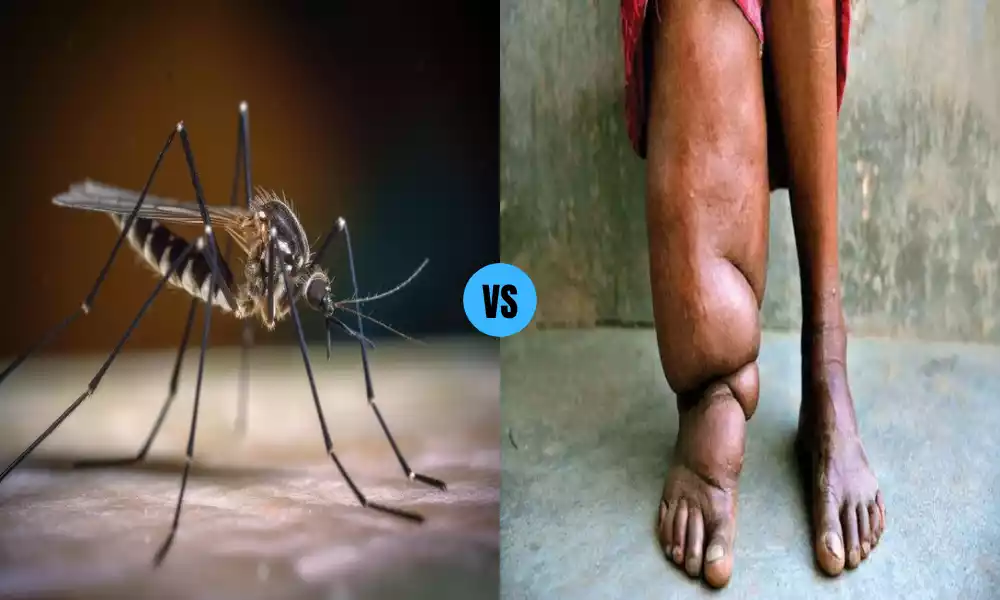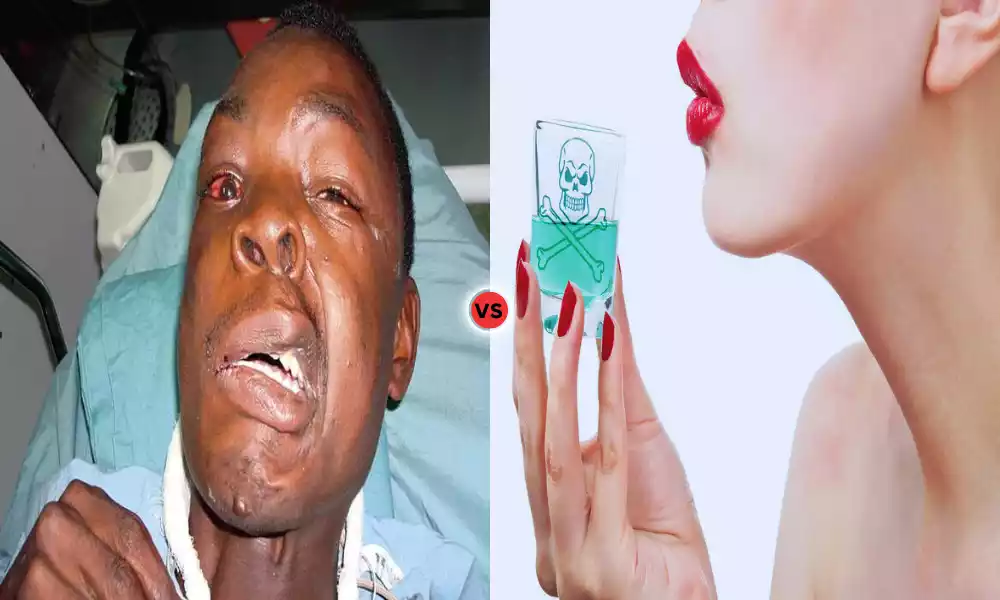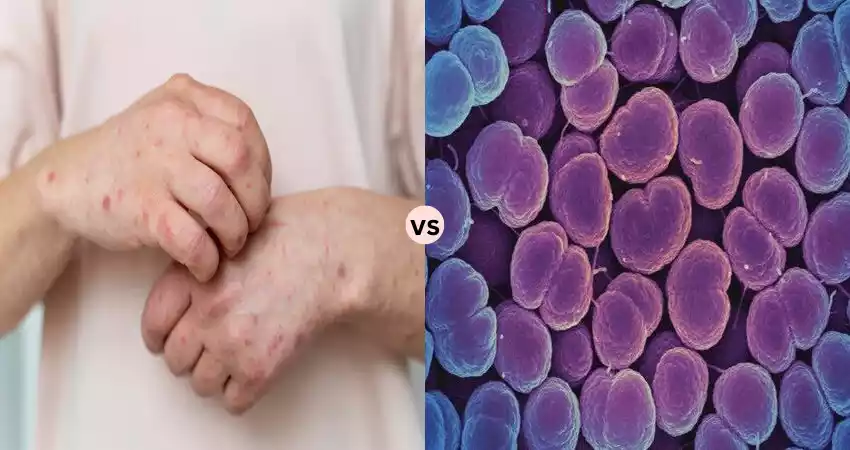Malaria and Filariasis are two distinct tropical diseases with significant global impact. Malaria is caused by Plasmodium parasites transmitted through Anopheles mosquitoes, leading to symptoms such as fever and anemia. Filariasis, on the other hand, arises from Wuchereria bancrofti, Brugia malayi, or Brugia timori worms transmitted by various mosquito species, causing symptoms like lymphedema and elephantiasis. Both diseases have distinct causative agents, modes of transmission, and symptoms, necessitating accurate diagnosis and tailored interventions for effective control and prevention.
What is Malaria?
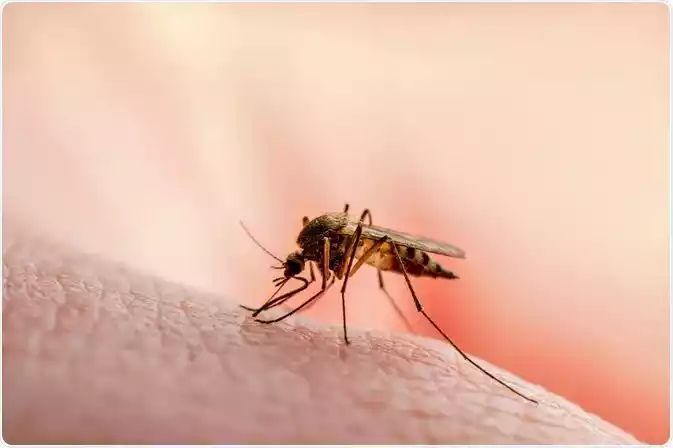
Malaria is an infectious mosquito disease caused by parasites from the Plasmodium genus. It is a significant public health concern, particularly in tropical and subtropical regions of the world. Disease transmission occurs through bites from female Anopheles mosquitoes carrying the infection.
Once the parasite enters the human bloodstream, it travels to the liver and then infects red blood cells, leading to a cycle of replication and destruction of these cells. This cycle is responsible for the characteristic symptoms of malaria, which include high fever, chills, sweats, fatigue, body aches, and sometimes more severe complications such as organ failure and cerebral malaria, which affects the brain.
Malaria is prevalent in many parts of Africa, Asia, and the Americas, where environmental conditions are conducive to mosquito breeding and the transmission of the parasite. Prevention measures include using insecticide-treated bed nets, indoor residual spraying of insecticides, and taking antimalarial medications. Efforts to control and eliminate malaria involve a combination of strategies such as reducing mosquito populations, providing early diagnosis and prompt treatment, and researching potential vaccines.
Symptoms of Malaria
Malaria symptoms can vary in severity and presentation, but they generally include a combination of the following:
-
- Fever: Malaria is characterized by recurrent episodes of high fever, often accompanied by chills and shivering. The fever tends to have a cyclical pattern, with symptoms worsening and then subsiding.
- Chills: During the fever episodes, individuals may experience intense chills and shivering as their body temperature rises and falls.
- Sweats: Following the chills, a fever is often accompanied by profuse sweating as the body temperature rises again.
- Fatigue: Malaria can cause extreme fatigue and weakness, which can persist even between fever episodes.
- Headache: Many individuals with malaria experience severe headaches that can be debilitating.
- Muscle and Joint Pain: Joint and muscle discomfort are classic indicators of malaria infection.
- Nausea and Vomiting: Malaria can lead to nausea and sometimes vomiting.
- Anemia: The destruction of red blood cells by the malaria parasite can lead to anemia, which can cause fatigue, weakness, and paleness.
- Jaundice: In severe cases, malaria can cause jaundice, characterized by yellowing of the skin and eyes.
- Enlarged Spleen and Liver: In some forms of malaria, the spleen and liver can become enlarged due to the accumulation of infected blood cells.
- Cerebral Malaria: In particularly severe cases, the disease can affect the brain, leading to symptoms such as confusion, seizures, and coma.
It’s important to note that symptoms can vary based on the species of Plasmodium parasite causing the infection, the individual’s immune response, and other factors. If you suspect you have malaria, it’s crucial to seek medical attention promptly, as untreated malaria can lead to serious complications and even death.
Transmission of Malaria
Malaria is primarily transmitted through the bites of infected female Anopheles mosquitoes. The transmission process involves several stages:
- Infection of Mosquitoes: An uninfected female Anopheles mosquito becomes infected with the malaria parasite (Plasmodium) when it feeds on the blood of a person who already has malaria. The parasite enters the mosquito’s digestive system.
- Parasite Development: Inside the mosquito, the Plasmodium parasites undergo a complex series of transformations, including multiplication and differentiation. The parasites eventually migrate to the mosquito’s salivary glands, where they can be injected into a new host.
- Mosquito Bites: When an infected female Anopheles mosquito bites a human to feed on their blood, it injects saliva containing the malaria parasites into the person’s bloodstream.
- Human Infection: The parasites then travel to the liver, where they multiply and develop further. After a period of maturation, the parasites are released into the bloodstream, where they invade red blood cells and continue their replication cycle.
- Transmission to Another Mosquito: When an uninfected mosquito bites an infected person, it ingests the parasites along with the person’s blood. The parasites then undergo further development inside the mosquito, completing the transmission cycle.
It’s important to note that not all mosquito species are capable of transmitting malaria. Anopheles mosquitoes are the primary vectors responsible for transmitting the disease. The risk of transmission is influenced by factors such as mosquito behavior, climate, and geographic location. Efforts to control malaria transmission include mosquito control measures (e.g., insecticide-treated bed nets, indoor residual spraying), as well as treating infected individuals to reduce the number of parasites circulating in the population and thereby decreasing the likelihood of mosquito transmission.
What is Filariasis?
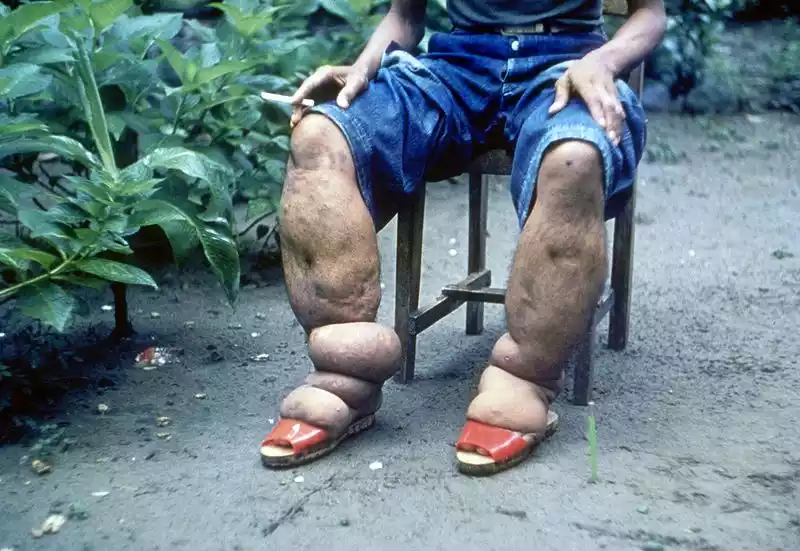
Filariasis, also known as lymphatic filariasis, is a parasitic disease caused by thread-like worms of the Wuchereria bancrofti, Brugia malayi, or Brugia timori species. These worms are transmitted to humans through the bites of infected mosquitoes, including species from the Culex, Anopheles, and Aedes genera.
Upon entering the human body, the adult worms reside in the lymphatic system, which is a part of the immune system responsible for maintaining fluid balance and filtering harmful substances. The presence of these worms can lead to chronic inflammation and obstruction of the lymphatic vessels, causing swelling and enlargement of body parts, a condition known as lymphedema. In severe cases, this can progress to a condition called elephantiasis, where the affected limbs or body parts become massively enlarged and disfigured.
Filariasis is primarily found in tropical and subtropical regions, with the highest burden of the disease occurring in countries with limited resources for healthcare and sanitation. Diagnosis often involves the microscopic examination of blood for the presence of microfilariae, which are the immature forms of the worms. Treatment typically involves antifilarial medications, and preventive measures include mosquito control, personal hygiene, and the use of bed nets to reduce exposure to mosquito bites.
Efforts to combat filariasis include mass drug administration campaigns to provide preventive treatment to at-risk populations and the improvement of sanitation and living conditions to reduce mosquito breeding sites. While progress has been made in eliminating the disease from some areas, filariasis remains a significant health challenge in many parts of the world.
Symptoms of Filariasis
Filariasis symptoms can vary depending on the severity of the infection and the stage of the disease. The two main clinical forms of filariasis are:
-
- Asymptomatic or Subclinical: Many people with filariasis may not exhibit any noticeable symptoms, especially during the early stages of infection. Even without overt symptoms, the presence of the parasites can lead to long-term damage to the lymphatic system.
- Acute Episodes: Acute symptoms can occur when the immune response reacts to the presence of the filarial parasites or their microfilariae. These symptoms can include fever, chills, and inflammation.
In more advanced cases, when the infection progresses, symptoms can include:
-
- Lymphedema: This is one of the hallmark symptoms of filariasis. Lymphedema is the swelling of body parts, typically limbs, due to the obstruction and damage of lymphatic vessels by the adult worms.
- Elephantiasis: This is an extreme form of lymphedema characterized by the massive enlargement of affected body parts, often giving them a grotesque appearance. Elephantiasis can affect the limbs, breasts, genitalia, and other areas.
- Hydrocele: In males, the presence of the worms can lead to a condition called hydrocele, where the scrotum becomes swollen due to an accumulation of fluid.
- Orchitis: In some cases, male patients may experience inflammation of the testes, known as orchitis.
- Chronic Inflammation: The presence of the worms and the resulting immune response can lead to chronic inflammation of the lymphatic system, which can cause discomfort and pain.
The severity of symptoms can vary widely among individuals, and not everyone with filariasis will develop elephantiasis or other severe complications. Diagnosis typically involves identifying microfilariae in blood samples, and treatment often involves antifilarial medications to eliminate the parasites. Preventive measures include mosquito control, personal hygiene, and the use of bed nets to reduce exposure to infected mosquitoes.
Transmission of Filariasis
Filariasis, also known as lymphatic filariasis, is transmitted through the bites of infected mosquitoes. The transmission process involves several steps:
- Mosquito Infection: Female mosquitoes of different genera, including Culex, Anopheles, and Aedes, become infected with filarial larvae (microfilariae) when they feed on the blood of a person who already has a filarial infection.
- Development in Mosquitoes: Inside the mosquito, the microfilariae develop into infective larvae within a certain period, becoming capable of transmitting the disease.
- Mosquito Bites: An infected mosquito then bites a human to feed on their blood. During this process, it injects the infective larvae into the person’s bloodstream through its saliva.
- Migration to Lymphatic System: Once inside the human body, the infective larvae migrate to the lymphatic system, where they develop into adult worms over several months.
- Lymphatic Infection: The adult worms reside in the lymphatic vessels, where they produce microfilariae. These microfilariae can be found in the blood and can be ingested by mosquitoes when they bite an infected person.
- Transmission to Another Mosquito: When an infected mosquito feeds on a person, it ingests microfilariae along with the blood. The ingested microfilariae then develop into infective larvae inside the mosquito, completing the transmission cycle.
The specific mosquito species that can transmit filariasis can vary based on the region and the particular filarial parasite species involved. Preventive measures to control filariasis transmission include mosquito control strategies (such as bed nets, insecticide spraying, and reducing mosquito breeding sites), as well as mass drug administration to treat infected individuals and reduce the number of microfilariae in the population, thereby decreasing the potential for transmission.
Comparison Table of Malaria and Filariasis
Here’s a comparison table highlighting the key differences between malaria and filariasis:
| Aspect | Malaria | Filariasis |
|---|---|---|
| Causative Agents | Plasmodium parasites (various species) | Wuchereria bancrofti, Brugia malayi, Brugia timori |
| Transmission | Anopheles mosquitoes | Various mosquitoes (Culex, Anopheles, Aedes) |
| Common Symptoms | Fever, chills, fatigue, anemia | Lymphedema, elephantiasis, fever, hydrocele |
| Geographic Distribution | Tropical and subtropical regions | Tropical and subtropical regions, some temperate |
| Diagnosis | Microscopic examination of blood smears | Microscopic identification of microfilariae |
| Treatment | Antimalarial medications, ACTs | Antifilarial medications, mass drug administration |
| Prevention Strategies | Bed nets, indoor spraying, antimalarials | Mosquito control, personal hygiene, bed nets |
| Complications | Organ failure, cerebral malaria | Lymphatic system damage, elephantiasis |
| Control Efforts | Mosquito control, early diagnosis | Mass drug administration, mosquito control |
This table provides a general overview of the differences between malaria and filariasis. The actual presentation and impact of these diseases can vary based on factors such as parasite species, geographic location, and individual immune responses.
The Parasites Behind the Diseases
The parasites responsible for causing malaria and filariasis are distinct and belong to different groups. Here’s an overview of the parasites behind each disease:
Malaria: The causative agents of malaria are parasites belonging to the Plasmodium genus. There are several species of Plasmodium that can infect humans, each leading to different manifestations of the disease. The most common species causing human malaria include:
-
- Plasmodium falciparum: This species is responsible for the majority of severe malaria cases and is associated with high mortality rates. It’s prevalent in sub-Saharan Africa but also found in other parts of the world.
- Plasmodium vivax: Found mainly in Asia, Latin America, and some parts of Africa, P. vivax can lead to relapses of the disease due to dormant liver-stage parasites reactivating.
- Plasmodium malariae: This species causes a milder form of the disease with less severe symptoms and longer asymptomatic periods. It has a global distribution.
- Plasmodium ovale: Similar to P. vivax, P. ovale can also cause relapses, primarily in parts of Africa and the Asia-Pacific region.
- Plasmodium knowlesi: This species primarily infects monkeys, but zoonotic transmission to humans can occur, causing malaria in parts of Southeast Asia.
Filariasis: Lymphatic filariasis is caused by parasitic worms of the following species:
-
- Wuchereria bancrofti: This species is responsible for the majority of lymphatic filariasis cases worldwide. It is found in tropical and subtropical regions, with a significant impact on public health and economic development.
- Brugia malayi: This species is found in parts of Asia, including India and Southeast Asia.
- Brugia timori: This species is localized to certain areas of Southeast Asia, including Timor-Leste and nearby islands.
These filarial worms are transmitted to humans through the bites of infected mosquitoes. The adult worms reside in the lymphatic system, where they can cause chronic inflammation, lymphedema, and other severe complications over time.
Treatment of Malaria and Filariasis
Treatment approaches for malaria and filariasis differ due to the distinct causative agents and their lifecycle stages. Here’s an overview of the treatment methods for both diseases:
Treatment of Malaria
- Antimalarial Medications: Various antimalarial drugs are used to treat malaria. The choice of drug depends on factors such as the species of Plasmodium causing the infection and the geographic location. Common antimalarial drugs include chloroquine, artemisinin-based combination therapies (ACTs), mefloquine, atovaquone-proguanil, and others.
- Artemisinin Combination Therapies (ACTs): ACTs are widely recommended for treating uncomplicated malaria. They combine an artemisinin derivative, which rapidly reduces the number of parasites, with another antimalarial drug that clears the remaining parasites from the bloodstream.
- Severe Malaria Treatment: In cases of severe malaria, when the disease affects vital organs, treatment may involve hospitalization and intravenous administration of antimalarial drugs, such as quinine or artesunate.
- Preventive Treatment: For individuals at risk of malaria (such as travelers to endemic areas or pregnant women), preventive measures include taking prophylactic antimalarial medications before, during, and after travel to reduce the risk of infection.
Treatment of Filariasis
- Antifilarial Medications: The primary treatment for filariasis involves the use of antifilarial medications, such as diethylcarbamazine (DEC) or ivermectin, to kill the adult worms and microfilariae in the bloodstream. These medications target different stages of the filarial parasites’ lifecycle.
- Mass Drug Administration (MDA): In areas with high prevalence of filariasis, mass drug administration campaigns are conducted. These campaigns involve distributing antifilarial drugs to entire communities to treat and prevent further spread of the disease.
- Hygiene and Management of Symptoms: For individuals with lymphedema or elephantiasis, managing symptoms and preventing secondary infections are important. Elevating affected limbs, practicing good hygiene, and using compression bandages can help reduce swelling and discomfort.
- Mosquito Control: Reducing exposure to mosquito bites through the use of bed nets, insect repellents, and minimizing outdoor activities during peak mosquito activity times can also play a role in preventing filariasis transmission.
Proper diagnosis by a healthcare professional is essential before initiating any treatment. Additionally, in both diseases, efforts to control and eliminate transmission involve a combination of treatment, preventive measures, and public health interventions.
Global Impact
Malaria and Filariasis have significant global impacts on public health, economies, and social well-being. Here’s a brief overview of their respective global impacts:
Malaria:
- Morbidity and Mortality: Malaria is a major cause of morbidity and mortality, particularly in low-income countries with limited access to healthcare. It disproportionately affects children under the age of five and pregnant women.
- Economic Impact: Malaria places a substantial economic burden on affected countries. It leads to decreased productivity, increased healthcare expenditures, and reduced economic development.
- Education: Malaria-related illnesses often lead to school absenteeism and decreased educational attainment, further perpetuating the cycle of poverty.
- Healthcare Systems: High malaria prevalence strains healthcare systems, diverting resources from other health interventions and services.
- Global Efforts: Despite these challenges, significant progress has been made in reducing malaria cases and deaths through interventions such as bed net distribution, indoor residual spraying, and improved access to antimalarial treatments.
Filariasis:
- Chronic Disability: Filariasis can cause severe disabilities like lymphedema and elephantiasis, leading to reduced mobility, social stigma, and decreased quality of life.
- Economic Impact: The physical disability caused by filariasis can result in reduced workforce participation and lost income for affected individuals and their families.
- Healthcare Burden: Filariasis requires long-term healthcare management for those with severe symptoms, which can strain healthcare resources.
- Community Stigma: Stigmatization due to visible physical deformities like elephantiasis can lead to social isolation and psychological distress.
- Global Elimination Efforts: International efforts have been made to eliminate filariasis through mass drug administration, which aims to reduce transmission and prevent disability. Progress has been made across many fields, yet many obstacles still need to be met in order to move forward successfully.
Both diseases also contribute to a cycle of poverty, where impoverished living conditions and lack of access to proper healthcare contribute to their persistence. Global initiatives, research, and funding have been directed toward the control and eventual elimination of these diseases. International cooperation and investment in prevention, diagnosis, and treatment are crucial to reducing the global burden of malaria and filariasis.
Prevention Measures
Here are concise prevention measures for malaria and filariasis:
Malaria Prevention:
- Use insecticide-treated bed nets.
- Apply indoor residual spraying with insecticides.
- Eliminate mosquito breeding sites.
- Take prophylactic antimalarial drugs in high-risk areas.
- Seek early diagnosis and treatment.
- Support ongoing research for effective vaccines.
Filariasis Prevention:
- Control mosquito populations through measures like bed nets and indoor spraying.
- Administer antifilarial drugs in mass drug administration campaigns.
- Maintain personal hygiene.
- Minimize exposure to mosquito bites.
- Raise community awareness about preventive measures.
- Support global efforts to eliminate lymphatic filariasis.
Implementing these measures can significantly reduce the transmission and impact of both diseases.
Complications
Malaria and Filariasis can lead to various complications, some of which can be severe and even life-threatening. Here’s a summary of the complications associated with each disease:
Complications of Malaria
- Severe Malaria: Malaria caused by Plasmodium falciparum can lead to severe complications such as cerebral malaria (brain involvement), severe anemia, acute kidney injury, and respiratory distress.
- Organ Dysfunction: Severe malaria can lead to dysfunction or failure of vital organs like the brain, liver, kidneys, and lungs.
- Pregnancy Complications: Malaria during pregnancy can result in maternal anemia, low birth weight, preterm delivery, and increased risk of maternal and infant mortality.
- Neurological Effects: Cerebral malaria can cause seizures, coma, and long-term neurological deficits in survivors.
- Recurrence: In the case of Plasmodium vivax and Plasmodium ovale infections, dormant liver-stage parasites can reactivate, leading to recurrent bouts of malaria.
Complications of Filariasis
- Lymphedema: Chronic swelling of limbs due to blocked lymphatic vessels can lead to reduced mobility, secondary skin infections, and social stigma.
- Elephantiasis: In severe cases, lymphatic filariasis can result in the enlargement of limbs or other body parts, causing significant disability and cosmetic disfigurement.
- Hydrocele: In males, filarial worms can cause fluid buildup in the scrotum, leading to pain, discomfort, and fertility issues.
- Secondary Infections: Open sores and skin lesions associated with filariasis-related conditions can become sites of secondary bacterial and fungal infections.
- Psychosocial Impact: The visible deformities caused by filariasis can lead to social isolation, discrimination, and psychological distress.
Both diseases have the potential to cause long-term health issues and impact the affected individuals’ quality of life. Early diagnosis, appropriate medical care, and public health interventions are essential to prevent and manage these complications.
Vulnerable Populations
Certain populations are more vulnerable to the effects of malaria and filariasis due to factors such as limited access to healthcare, environmental conditions, and socio-economic challenges.
Here are some vulnerable populations for each disease:
Vulnerable Populations for Malaria:
- Children: Children under the age of five are particularly vulnerable to severe malaria and its complications, as their immune systems are still developing.
- Pregnant Women: Pregnant women are more susceptible to severe forms of malaria and face risks such as maternal anemia, low birth weight, and preterm delivery.
- Travelers: People traveling from non-endemic to endemic regions are at risk of contracting malaria if they lack immunity. This includes tourists, business travelers, and migrants.
- Remote Communities: People living in remote or rural areas with limited access to healthcare and preventive measures are at higher risk of both contracting and succumbing to malaria.
- Immune-Compromised Individuals: People with weakened immune systems, such as those with HIV/AIDS or other immunosuppressive conditions, are at greater risk of severe malaria.
Vulnerable Populations for Filariasis:
- Impoverished Communities: Those living in poverty with inadequate access to proper sanitation, clean water, and healthcare facilities are more susceptible to filariasis.
- Suburban and Rural Areas: Populations in suburban and rural regions, where mosquito exposure is higher due to environmental factors, are at greater risk of filariasis transmission.
- Migrant Workers: Migrant populations, often living in overcrowded conditions with poor sanitation, are vulnerable to filariasis due to increased exposure to infected mosquitoes.
- Women: Women with filariasis-related complications such as lymphedema and elephantiasis may face challenges in terms of mobility, stigma, and access to resources.
- Children: Children who acquire filariasis infections at an early age may experience long-term consequences as the disease progresses over time.
- Communities with Limited Health Services: Lack of access to proper healthcare services for diagnosis and treatment exacerbates the impact of filariasis in vulnerable communities.
Efforts to combat both malaria and filariasis should take into consideration the specific needs of these vulnerable populations to ensure equitable access to prevention, diagnosis, and treatment interventions.
Current Research and Innovations
Here are some ongoing areas of research and innovations related to malaria and filariasis:
Malaria:
-
- Malaria Vaccines: Research is continuing on the development of effective malaria vaccines. The most advanced vaccine candidate, RTS,S/AS01 (Mosquirix), received a positive recommendation from the World Health Organization (WHO) for use in young children in specific settings.
- Gene Editing for Mosquitoes: Genetic modification techniques like CRISPR-Cas9 are being explored to create genetically modified mosquitoes that are resistant to the malaria parasite, potentially reducing transmission.
- Drug Resistance: Studies are ongoing to monitor and understand the emergence and spread of drug-resistant malaria parasites and to develop new antimalarial drugs to combat resistance.
- Point-of-Care Diagnostics: Researchers are working on developing rapid and accurate diagnostic tools that can be used in resource-limited settings to quickly identify and treat malaria cases.
Filariasis:
-
- Antifilarial Drug Development: Research is focused on discovering new and more effective antifilarial drugs to treat filariasis, particularly targeting adult worms.
- Mass Drug Administration Strategies: Innovations are being explored to optimize the implementation of mass drug administration campaigns, ensuring that treatments reach at-risk populations efficiently.
- Vector Control Innovations: Studies are ongoing to develop new tools for controlling mosquito populations, including the use of novel insecticides and mosquito-resistant materials.
- Economic Impact Studies: Researchers are examining the economic burden of filariasis to better understand its impact on affected communities and advocate for increased investment in prevention and control efforts.
- Integration with Other Health Programs: Efforts are being made to integrate filariasis control programs with other health interventions, maximizing resources and improving overall health outcomes.
Advancements in research and innovations continue to evolve, and there may have been new developments since my last update. To get the most current information, I recommend checking reputable sources such as the World Health Organization (WHO), research institutions, and medical journals.
Final Thoughts
Malaria and Filariasis are two significant tropical diseases with complex transmission cycles and wide-ranging impacts on global health. While distinct in their causative agents and symptoms, both diseases share common challenges related to prevention, diagnosis, and treatment. Efforts to combat these diseases involve a multi-faceted approach, including vector control, drug development, health education, and community engagement.
Continued research and innovations are essential to further improve our understanding of these diseases and to develop more effective strategies for their prevention and elimination, ultimately improving the well-being of vulnerable populations worldwide.

